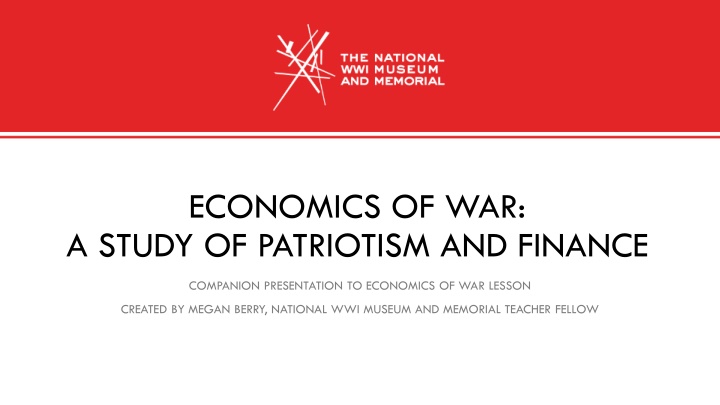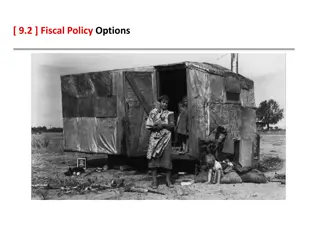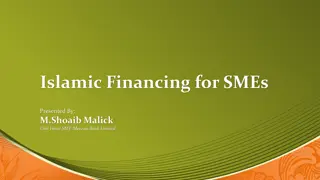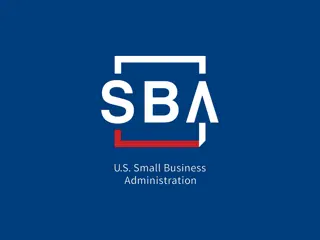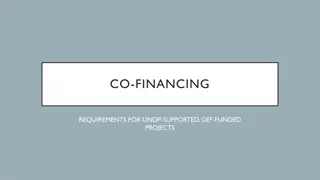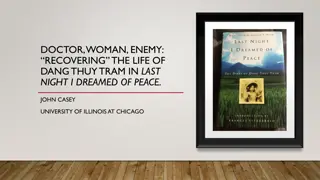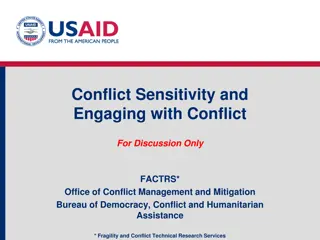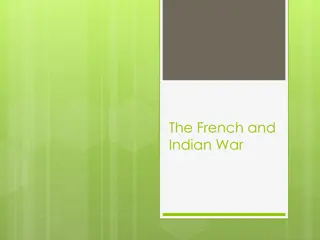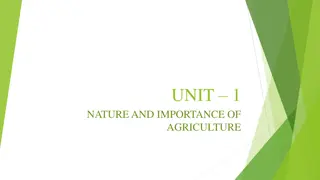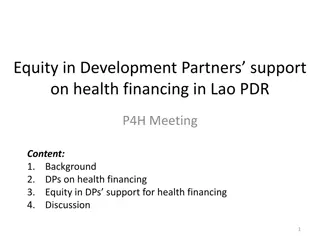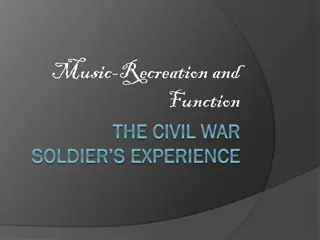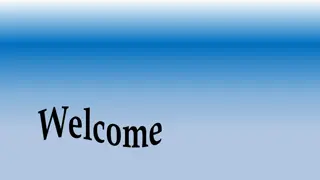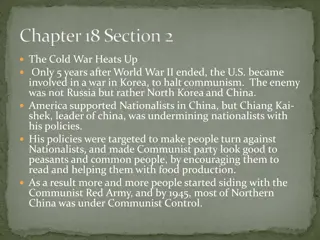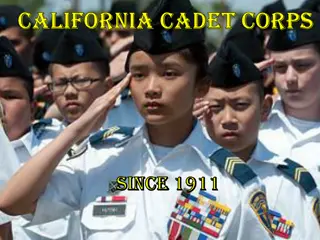Economics of War: Understanding Financing and Patriotism in Conflict
Delve into the intersection of patriotism and finance in the context of war, exploring concepts like war bonds, economic impacts, and government funding strategies. Uncover historical and contemporary examples to showcase the significance of financial decisions in times of conflict.
Download Presentation

Please find below an Image/Link to download the presentation.
The content on the website is provided AS IS for your information and personal use only. It may not be sold, licensed, or shared on other websites without obtaining consent from the author.If you encounter any issues during the download, it is possible that the publisher has removed the file from their server.
You are allowed to download the files provided on this website for personal or commercial use, subject to the condition that they are used lawfully. All files are the property of their respective owners.
The content on the website is provided AS IS for your information and personal use only. It may not be sold, licensed, or shared on other websites without obtaining consent from the author.
E N D
Presentation Transcript
ECONOMICS OF WAR: A STUDY OF PATRIOTISM AND FINANCE COMPANION PRESENTATION TO ECONOMICS OF WAR LESSON CREATED BY MEGAN BERRY, NATIONAL WWI MUSEUM AND MEMORIAL TEACHER FELLOW
OBJECTIVES 1. Explore financial savings concepts, including bonds 2. Investigate the impact of war bonds on the economy 3. Illustrate examples of patriotism in WWI and Iraq/Afghanistan 4. Connect WWI financing to current day economic choices in Iraq/Afghanistan 5. Construct a commercial aiming to sell war bonds in support of today s conflicts
ESSENTIAL QUESTIONS *How do you pay for your obligations or things you want?* What do you value about this country? How does a government pay for a war? What methods were used by the American government to encourage Americans to support the war effort? How could Americans not involved in combat show their support for the war effort? In what ways does buying war bonds show patriotism? What effect does war have on a government s economy?
ECONOMIC SITUATION 1916: U.S. virtually debt-free Debt occupied 2.7% of the economy Shift in production from civilian to military goods European purchases of war goods created an economic boom Increase in labor force matched by a decline in unemployment 1914: 7.1% 1916: 5.1% 1918: 1.4%
DOLLARS AND SENSE 3 Ways to Finance: 1. Taxes - frighten the wealthy / reduce support 2. Borrowing - hid the real cost / made war too easy 3. Printing Money - causes inflation Economist Adam Smith argued taxes were best - they conveyed the real cost of wars to the public. Where s the balance?
HOW DO YOU PAY FOR A WAR? Secretary of the Treasury William Gibbs McAdoo hoped for 50/50 balance In actuality: ~ 25% of WWI was financed through taxes ~ 50% borrowing from the public ~ 25% money creation How do you convince people to make sacrifices?
ITS LEND OR LOSE Government plays off of patriotism and conscience Rebranding of savings bonds Financial incentives
PATRIOTISM People bought bonds because of feelings of patriotism, nationalism and anti- Germanism The nation s best artists and actors were recruited to campaign and sell liberty loan bonds Each state had a quota of bonds to sell and put pressure on the public to buy Strong social pressures caused people to buy, including pressure from employers: Workers were strongly encouraged to buy bonds by their employers Teachers were dismissed if they presented anything other than the allied point of view
FOR HOME AND COUNTRY Liberty Loans 5 issues released (varied from 3-4.5% interest) Sold in denominations from $50-$10,000 War Savings Certificates $4.12 (4.5% interest) 25-cent stamps - could be exchanged for a war savings certificate Purchasing opportunity to support the war effort for those with limited means, as well as young people
EFFECTIVENESS On the 2nd day of bond sales in April 1917, sales jumped to an average of $480,508 per minute 2/3 of war funds used between 1917-1918 were obtained through Liberty bond sales Between 1/4 1/3 of the entire population of the United States bought a Liberty or Victory bond
EFFECTIVENESS It cost little to encourage Americans to be patriotic and to remind them of their public duty Lots of methods were used to encourage purchase Americans were determined to show their support
A war undertaken without sufficient monies has but a wisp of force. Coins are the very sinews of battles. -Fran ois Rabelais, Gargantua Posters from the National WWI Museum and Memorial collection.
Artifacts from the National WWI Museum and Memorial collection.
OTHER SALES METHODS COMMITTEE ON PUBLIC INFORMATION Public opinion stands recognized as a vital part of national defense. Woodrow Wilson The CPI was created in April 1917 and headed by George Creel Produced posters, pamphlets and patriotic films Created speaker s campaign with men and women volunteers who delivered four- minute speeches during movie intermissions at theaters and other public places. They encouraged public support of the war, including the purchase of war bonds
THE FINAL OUTCOME YEAR BILLIONS OF DOLLARS % GDP 1917 6 10.9 1918 16 23 1919 9 11.7 1920 1 1.1 TOTAL 32 46.6 In today s money, that s $548 billion
COST OF WAR TODAY 2003 2011 Since 2001 $1.06 trillion spent on Iraq War $1.07 trillion spent on war in Afghanistan The Afghan and Iraq wars are more than five times more expensive than World War I Today it costs $3.9 million dollars to keep one soldier in Afghanistan for a year IRAQ & AFGHANISTAN WARS ARE FUNDED THROUGH DEBT. WHY NOT LIBERTY BONDS?
ASSESSMENTS STUDENTS WILL CHOOSE ONE OF THE FOLLOWING OPTIONS: 1. Create a comparison of patriotism between WWI and today in a visual essay 2. Create a commercial to sell war bonds for today s conflicts (iMovie, radio, etc.) 3. Give a Four-Minute Man speech to sell war bonds for today s conflicts 4. Another idea that is not listed above? Just ask!
CITATIONS AMADEO, KIMBERLEY. COST OF AFGHANISTAN WAR: TIMELINE, ECONOMIC IMPACT. THE BALANCE. UPDATED JANUARY 11, 2018. WEB. <HTTPS://WWW.THEBALANCE.COM/COST-OF-AFGHANISTAN-WAR-TIMELINE-ECONOMIC-IMPACT-4122493> AMADEO, KIMBERLY. COST OF IRAQ WAR: TIMELINE, ECONOMIC IMPACT. THE BALANCE. UPDATED DECEMBER 30, 2017. WEB. <HTTPS://WWW.THEBALANCE.COM/COST-OF-IRAQ-WAR-TIMELINE-ECONOMIC-IMPACT-3306301> CORDESMAN, ANTHONY. U.S. MILITARY SPENDING: THE COST OF WARS REPORT. JULY 10, 2017. CENTER OF STRATEGIC AND INTERNATIONAL STUDIES. WEB. <HTTPS://WWW.CSIS.ORG/ANALYSIS/US-MILITARY-SPENDING-COST-WARS> DAGGETT, STEPHEN. "COSTS OF MAJOR U.S. WARS." CONGRESSIONAL RESEARCH SERVICE 7-5700 (2010). WEB. <HTTP://CIRONLINE.ORG/SITES/DEFAULT/FILES/LEGACY/FILES/JUNE2010CRSCOSTOFUSWARS.PDF>. "FOUR MINUTE MEN - ECHOES OF THE GREAT WAR: AMERICAN EXPERIENCES OF WORLD WAR I." THE LIBRARY OF CONGRESS. WEB. <HTTPS://WWW.LOC.GOV/EXHIBITIONS/WORLD-WAR-I-AMERICAN-EXPERIENCES/ONLINE- EXHIBITION/OVER-HERE/SURVEILLANCE-AND-CENSORSHIP/FOUR-MINUTE-MEN> KECKEISEN, SARA. "THE COST OF CONSCIENCE PART 1." KANSAS HERITAGE SUMMER (2004). WEB. <HTTPS://WWW.KSHS.ORG/PUBLICAT/HERITAGE/2004SUMMER_KECKEISEN.PDF>. ROCKOFF, HUGH. "UNTIL IT S OVER, OVER THERE: THE U.S. ECONOMY IN WORLD WAR I." NBER WORKING PAPER SERIES 1 JUNE 2004. PRINT.
CITATIONS ROCKOFF, HUGH, AND SUNG KANG. "CAPITALIZING PATRIOTISM: THE LIBERTY LOANS OF WORLD WAR I." NBER WORKING PAPER SERIES 2006. PRINT. SHIPMAN ANDREWS, MARY. HER COUNTRY: A STORY OF THE LIBERTY LOAN. CHARLES SCRIBNER'S SONS, 1918. PRINT. ST. CLAIR, LABERT. THE STORY OF LIBERTY LOANS. NABU PUBLIC DOMAIN REPRINTS, 1919. PRINT. STORY, LOUISE. "BUYING A SHARE OF VICTORY. OR NOT." THE NEW YORK TIMES. THE NEW YORK TIMES, 2 JAN. 2010. WEB. 20 MAY 2015. <HTTP://WWW.NYTIMES.COM/2010/01/03/WEEKINREVIEW/03STORY.HTML?_R=0>. "THE PATRIOT SAVINGS BOND." TREASURY DIRECT. BUREAU OF THE FISCAL SERVICE, 18 DEC. 2013. WEB. 20 MAY 2015. <HTTPS://WWW.TREASURYDIRECT.GOV/INDIV/RESEARCH/INDEPTH/EBONDS/RES_E_BONDS_EEPATRIOTBOND.HTM>. THE BIRTH OF MODERN PUBLIC RELATIONS , MUSEUM LABEL. KANSAS CITY, MO: THE NATIONAL WWI MUSEUM AND MEMORIAL. "WWI HOME FRONT: MANIPULATING MINDS: THE WAR PROPAGANDA MACHINE." WWI HOME FRONT: MANIPULATING MINDS: THE WAR PROPAGANDA MACHINE. 9 NOV. 2012. WEB. 20 MAY 2015.
